Photo Gallery
© Mr Dave Phillips

Mr Phillips began work at the CWS hosiery factory, where Dave's father operated one of the huge machines they can identify used through dated takeover by The Hosiery Mills Company.
This album does however, feature two other interests. A small collection of New Hucknall Colliery memorabilia shows a wagon plate and signboard. The additional inspiration of a 1950s photo of a Bedford two ton tipper truck that made local deliveries in two tone blue livery, is how Dave came to choose the New Hucknall name for his own small freight haulage business, all being based upon having fond memories of watching those pit yard trains.
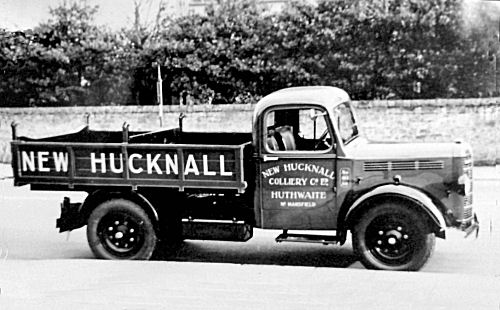
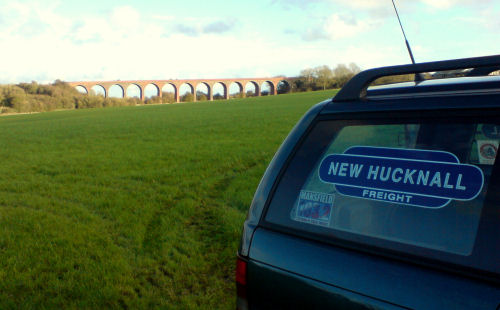
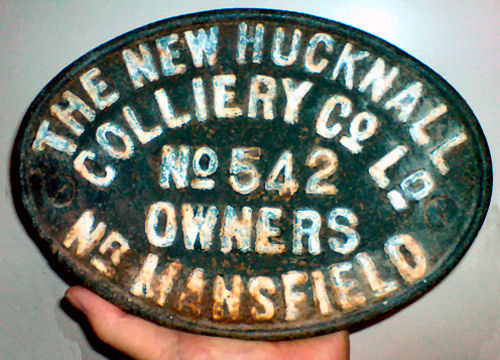

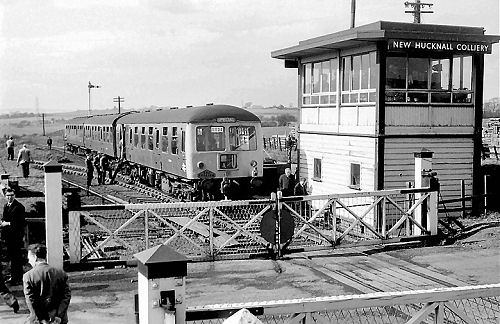
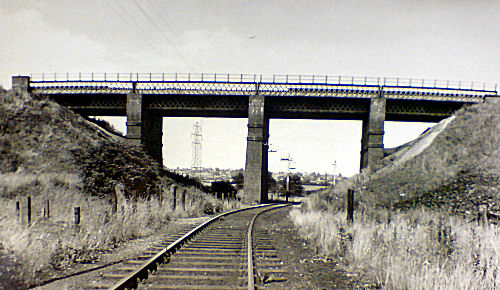
Many fondly recalled sighting speeding locomotives along a Great Central railway passing beneath a Fulwood Cutting Four Arches Bridge. Another locally known New Bridge
offered good vantage point for coal wagons among New Hucknall Colliery sidings.
A 1977 Free Press column by former councillor David Ayres gave a romantic look back to when a New Bridge offered miners a safe foot path betweem collieries. In light of proposals laying a High Speed line, Dave Phillips presents an updated history, adding his own fond memories below this revealing memorabilia collection entitled Echoes of New Hucknall Colliery Sidings.

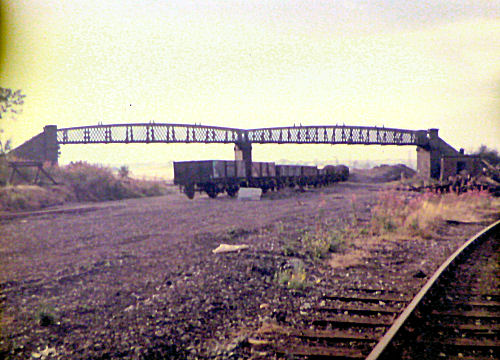






Echoes of New Hucknall Sidings
With the passing of almost half a Century, it is now difficult to visualise that Huthwaite once had a Major Railway line running by its border- The Great Central Manchester to London (Marylebone) route. In September 2016, this Main Line will have been closed exactly 50 years, and few landmarks now remain of this once important route which served the area.Originally built by the Manchester Sheffield & Lincolnshire Railway in 1893. It became the Great Central in 1897, prior to fully opening as a through route to passengers in March 1899.
The handiest spot to Huthwaite was a bridge which carried the footpath from our village to South Normanton. This steel girder footbridge, known locally as "New Bridge", straddled the running lines and sidings from when the line opened, through to the abandoning of the Main Line in 1966. The footbridge then remained in use for over a decade after the total closure of the route. It was always a handy footpath for local miners on their way to work at the many collieries dotted around this area. Besides this, it became a very popular vantage point for generations of railway enthusiasts from Huthwaite and the surrounding area. The line then steered North on a towering embankment towards Hilcote, Newton and Tibshelf, passing over the Midland Railway's New Hucknall Colliery branch on a viaduct. This tall, impressive structure was known to locals as the "Four Arches".
Many personal memories of the final years around this line remain strong to this day. The long, sunny Summer days spent beside the line with groups of enthusiasts, all sharing the same childhood excitement of what locomotive would appear next, and from which direction. On many occasions, time would be passed by making wooden rafts, on which we would sail around the pond at the foot of the Four Arches. Great Crested Newts abounded in this pond, and would surface looking like miniature Dinosaurs. These Newts are a protected species nowadays. Some of the more adventurous members of our group had also climbed up into the base girders of the Four Arches itself, and attached a perilous "Tarzan Rope" which would only be tried out by the bravest element of the group! All happy memories, long passed by.
Huthwaite's own New Hucknall colliery was served by a branch line from the Great Central, which joined on to the Midland Railway branch to Westhouses, and together these lines crossed Common Road by means of a level crossing. Coal from the colliery sidings was then distributed via either route. New Hucknall Sidings, which was the Great Central's distribution point for this coal, was located in a large cutting, known as "Fulwood Cuttings", and was overlooked by the New Bridge girder structure.
Originally, Huthwaite UDC had asked the the Great Central to provide a station for the village at Fulwood, on a line which would have linked Huthwaite to Sutton in Ashfield. Unfortunately these plans never materialised, although they were actually considered in Parliament. One wonders what this station would have been called, as "Woodend for Hucknall Huthwaite" was the name given to the Midland Railway station at Whiteborough. It is hard to imagine our small village having TWO railway stations in its vicinity!
During the World War One years, the Great Central line carried an endless procession of freight trains, vital for the movement of materials to keep the country running. This was repeated again during the Second World War, although by then the line was under the ownership of the London & North Eastern Railway. Many people have said this line never really recovered from the rigours of the war years, and under British Railways ownership after 1947, soon became labelled a Duplicate Main Line. When B.R. became divided into separate regions in 1958, the line fell under Midland region management south of the Eastern Region boundary at Pilsley. Naturally, the Midland favoured their own route from Nottingham to Sheffield through Alfreton and Westhouses. In many quarters, B.R were strongly accused of deliberately running the line down, total closure being recommended in the infamous 1960's Beeching Report. All local stations including Kirkby Bentinck and Tibshelf Town were then axed in 1963. The last through train passed by in the early hours of September 4th 1966.
The wisdom of closing a major route such as the Great Central has been strongly questioned in many circles since. It has been estimated that in real terms, Dr Beeching saved enough money by closing the route, to build around 40 miles of Motorway at 1972 prices. It had the unfortunate distinction of being the last Main Line to open, and the first to close. It also benefited from high class Victorian engineering, and was built to continental loading gauges. It had been the dream of the Great Central chairman Edward Watkin to eventually reach France with his line via a Channel Tunnel, which has now of course been built.
Today, it is ironic that the proposed new HS2 Phase 2 rail link will actually run alongside much of the old Great Central line, providing the current preferred route is adopted. If this comes to fruition, we will even see HS2 running alongside New Bridge in the field beside Cartwright Lane. It will then cross the valley once again, skirting Hilcote on its way toward Newton. It will dive under Huthwaite Lane just above Yew Tree Farm on its way North. Events will then have turned full circle. Future Huthwaite residents might once again be able to stand on Strawberry Bank and view express passenger trains racing North or South along the valley.
29 Jan 15 by Dave Phillips Updated 20 Feb 15
